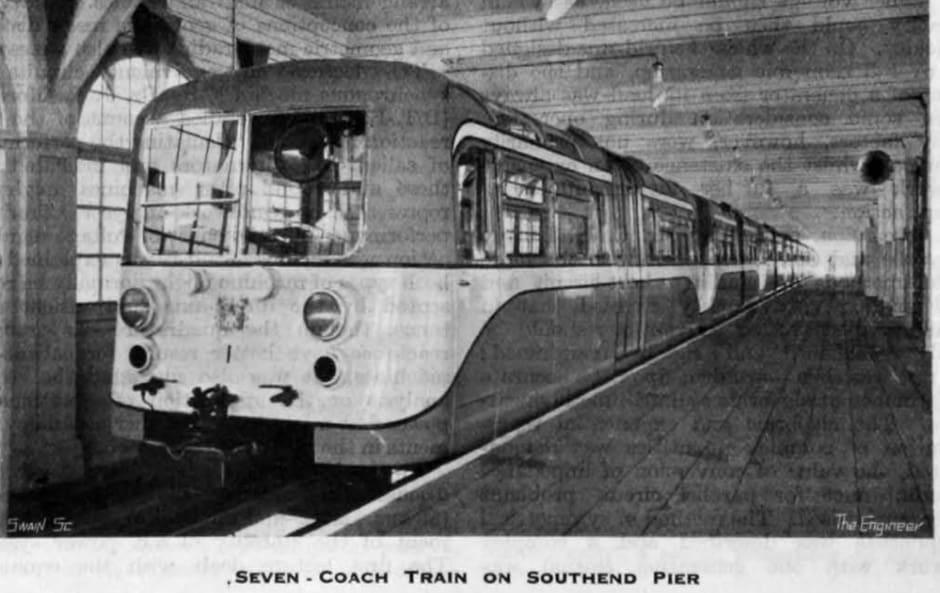April 1949: a peerless landmark
If a town can be defined by a single landmark then the jewel in Southend’s crown must surely be its record-breaking pier.

While not the oldest – that honour goes to Ryde Pier, which was built in 1813 – it is the world’s longest. The pleasure pier at Southend extends 1.34 miles into the Thames Estuary and looks likely to receive £18m in local authority funding for improvement work.
Included is £3.25m for new trains, which takes us back to April 1949 and the introduction of electric trains on to a pier which had provided public transport for its patrons for more than 100 years.
This was not lost on our correspondent, who breezed through a description of the new vehicles before providing a potted history – and ringing endorsement –of their electric predecessors. As noted, the pier’s original “train’’ was drawn by two horses and continued in use until 1890, when the first electric tramway was installed by Crompton and Co. of Chelmsford.
The company was subsequently incorporated in to Crompton Parkinson Ltd, which provided the electrical equipment for four new trains introduced in 1949. Resembling London Underground trains of the era, the new trains were made up of seven coaches – three motor (accommodating 31 passengers each) and four trailer (38 passengers each) – built by AC Cars Ltd.
Register now to continue reading
Thanks for visiting The Engineer. You’ve now reached your monthly limit of premium content. Register for free to unlock unlimited access to all of our premium content, as well as the latest technology news, industry opinion and special reports.
Benefits of registering
-
In-depth insights and coverage of key emerging trends
-
Unrestricted access to special reports throughout the year
-
Daily technology news delivered straight to your inbox










UK car production falls in April
Might the ´combination of factors´ include, in the face of stagnant EV sales, manufacturers reducing ICE car production in order to avoid the £15,000...